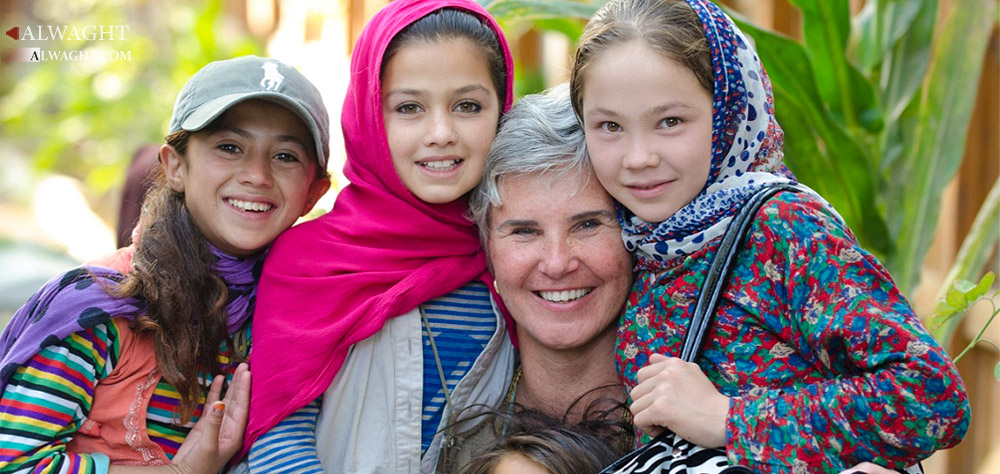Afghanistan is a loosily knit conglomeration of number of ethnic groups, chief of whom are Pashtuns, Tajiks, Uzbeks and Hazaras. These ehtnic groups have obvious dissimilarity, despite collectively residing in the region for hundreds of years. These ethnic groups of Afghanistan have their own way of living, defined by unwritten code.
Towns & Ethnic Majority
Town Approximate Population Dominating Ethnic Group
Kabul 1,500,000 Pashtuns
Kandahar 225,500 Pashtuns
Herat 177,300 Tajiks
Mazar e Sharif 130,600 Tajiks
Andkhui Uzbeks
Kunduz Tajiks
Ethnic Groups Population Ratio
Pashtun 42%, Tajik 27%, Hazara 9%, Uzbek 9%, Aimak 4%, Turkmen 3%, Baloch 2%, other 4%
Mainstream Ethnic Groups
Pashtuns
Pashtuns or Pakhtuns or Pathans or Persian Afghans are the largest ethnic group in Afghanistan. They constitute about two-fifth of Afghan population. Pashtoons can be further segregated into tribes, most famous among whom are Durrani and Ghilzai. Other major tribes are Wardak, Jaji, Tani, Jadran, Mangal, Khugiani, Safi, Mohmand and Shinwari. They can be easily recognised from other Afghan ethnic groups, due to their Pashto language and peculiar way of living, called Pashtunwali.
Homeland of Pashtuns lies south of the Hindu Kush, but Pashtun groups are scattered all over the country. Most Pashtuns work in farmlands to earn their livelihood. Many of them live nomadic lifestyle too. These nomads live in tents made of black goat hair.
Tajiks
Tajiks or Tadzhiks constitute the second largest ethnic group in Afghanistan. Populating around 4.5 million, they live in the Panjsher Valley north of Kabul and in the northern and northeastern provinces of Parwan, Takhar, Badakhshan, and also Baghlan and Samangan. Few Tajik people extend into the central mountains. Most Tajiks speak Dari Persian language.
Tajik community is not divided into tribes. They prefer to identify themselves with the valley or region they live in like Panjsheri, Badakhshi, Samangani and Andarabi. For earning livelihood, Tajiks do sedentary mountain farming and sheep/goat herding. Tajiks grow variety of fine fruits and nuts.
Hazara
Central regions of Afghanistan, known as Hazarat, are inhabited by the Hazaras. Good number of Hazaras also dwell in Badakhshan. Most of them are farmers and shepherds. Most Hazaras are the followers of the Shia sect of Islam. The Hazaras have their ancestors in Xinjiang region of north-western China. For a long time, the Hazaras were a neglected lot. However, they are now trying to get rid of their inferior status.
Uzbeks
Approximate 1.3million Uzbeks live in Afganistan. They live all across the northern areas of Afghanistan, mixed with Tajik population. The Uzbeks are the followers of Sunni sect of Islam and speak central Turkic dialects like Uzbeki. Most Uzbeks earn livelihood by farming and herding. However, several Uzbeks have become successful businessmen and skilled artisans. Uzbek social structure is patriarchal and leaders having the title beg, arbab or khan enjoy considerable power. The Uzbeks have no hesitation marrying with Uzbek and Tajik, but are averse to nuptial relations with Pushtuns.
Turkmens
Turkmens dwell along the southern side of Amu Darya. Most Turkmens are nomadic poeple who herd yaks. Turkmens speak both archaic form of Turkish and Persian. Many nomadic Turkmens still live in dome-shaped tents based on wooden frames. Men wear coats with long sleeves, while women also wear long dresses to cover their hands in cold weather.
Nuristanis
The Nuristanis live in eastern Afghanistan bordering Pakistan. The region is so densily forested and rugged that it can be reached only by foot. They speak various dialects of Nuristani and Dardic. Usually, the Nuristanis are farmers, mountain herders and farmers. However, many of them have earned respectable place in the social order by getting into the army.
Baluchs
Baluchs in Afghanistan live in thinly populated deserts and semi-deserts of Helmand Province. Few Baluch enclaves can also be found in Faryab province. Number of Baluchs in Afghanistan is estimated around 100,000. Most people of Baluch ethnicity live in Pakistan and Iran. Most Baluchis can speak and understand Baluchi, Dari and Pashto. Chiefs of Baluch society are called sardars.
Other Ethnic Groups
Aimaqs live among nontribal people in the western regions of Badghis, Ghor and Herat provinces. They are Sunni Muslims and speak dialects resembling Dari. Several Arab enclaves can also be found in north-western Afghanistan. They are pastoralists who rear sheep and grow cotton and wheat. They speak not Arabic but Dari and Uzbeki. The Qizilbash are scattered all over Afghanistan. Traditionally, they have been holding administrative and professional positions. Sunni Brahui is a group living in the desert regions of south-western Afghanistan. Low in social heirarchy, they work as tenant farmers and hired herders for Baluch or Pashtun chieftains. The Wakhis live in small, remote hamlets in lower areas of Wakhan corridor and upper Badakhshan. The Farsiwans live near the Iran border or in some districts of Kandahar, Herat and Ghazni provinces. They are Dari-speaking agriculturalists.
Non-Muslim Population
Hindu-Sikh population in Afghanistan in 1990 was approximate 30,000. Under the reigns of Taliban, the Hindus were forced to wear yellow badges to identify themselves. Continuous violence caused rapid decline in Hindu-Sikh population.



























